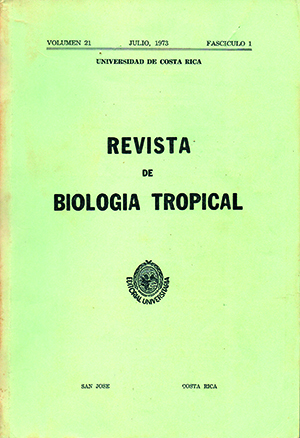Abstract
The fish fauna of the Gulf of Nicoya, Costa Rica, was sampled by shrimp trawlers of the FAO Fisheries Development Project and the Central American governments. This Gulf has been considered a typical tropical estuary with salinities and species diversity increasing from the estuary towards the ocean.
The shallower, less saline parts of the Gulf are inhabited by a community of fishes (the "Sciaenid Community"), in which the croaker family dominates in regards to the number of species, number of individuals and total biomass. Stellifer is the most diverse and abundant genus in the family. Other families represented are Ariidae, Cynoglossidae, Polynemidae, Engraulidae and Clupeidae. Juvenile stages of several species that, as adults, inhabit the estuary or the open ocean were found near the mouth of the Tempisque River at very low salinities.
Agricultural and industrial development, often accompanied by widespread use of pesticides, chemical dumping, and erosion is daily altering the quality of the environment. It is imperative to continue studying this and other Central American estuaries in order to understand the effect of technological development on this feature of our landscape.
##plugins.facebook.comentarios##

This work is licensed under a Creative Commons Attribution 4.0 International License.
Copyright (c) 1973 Revista de Biología Tropical


